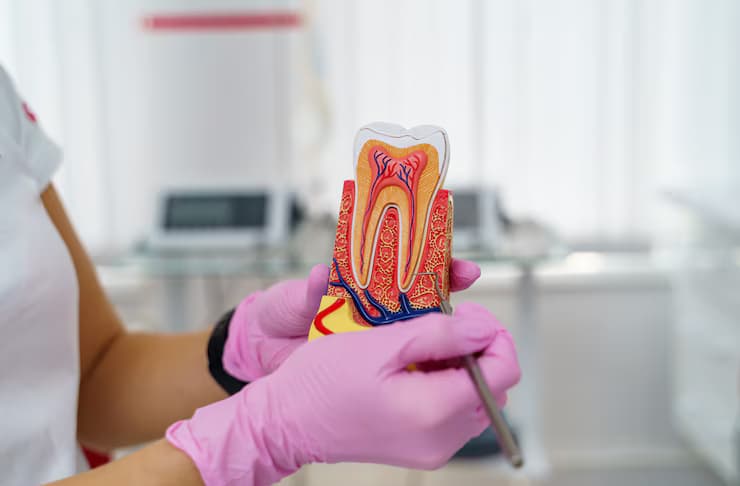A root canal procedure is often surrounded by a shroud of mystery and trepidation. Many people associate it with pain and discomfort, but understanding the intricacies of the procedure can demystify the experience and highlight its necessity. Root canals are designed to save a tooth that is severely infected or damaged, thereby preventing further complications that could arise from neglecting dental health.
This article will guide you through the entire process, offering insights into each step, thereby empowering you with knowledge and alleviating any unwarranted fears.
Understanding the Need for a Root Canal
Before delving into the procedure, it is essential to understand why a root canal is necessary. The tooth comprises several layers: the outer enamel, the inner dentin, and the pulp chamber, which contains nerves and blood vessels. When the pulp becomes infected due to deep decay, cracks, or trauma, it can result in severe pain and the potential for abscess formation. In these cases, a root canal becomes a vital procedure to remove the infected tissue, save the tooth, and restore functionality.
Dental professionals typically diagnose the need for a root canal through a thorough examination, which often includes X-rays. These images allow the dentist to see the extent of the infection and determine the best course of action. By addressing the issue promptly, the dentist can prevent the infection from spreading to surrounding tissues, ensuring the overall health of your mouth.
The Initial Consultation and Preparation
When you arrive for your root canal appointment, the dentist will first conduct a comprehensive assessment. They will discuss your medical history and any symptoms you may be experiencing, such as swelling or prolonged sensitivity to temperature changes. This dialogue is crucial in tailoring the procedure to your specific needs. Following this consultation, the dentist will take X-rays to confirm the diagnosis and evaluate the shape of the root canals.
Once the assessment is complete, the dentist will explain the procedure and its purpose, helping to ease any anxiety you may be feeling. To ensure your comfort, local anaesthesia will be administered to numb the affected area. You may feel a slight pinch as the anaesthetic is injected, but this sensation is typically short-lived. Once the area is numbed, the dentist will proceed with the root canal, ensuring that you remain pain-free throughout the process.
The Root Canal Procedure: Step by Step
With everything in place, the actual root canal procedure can begin. The dentist will first create a small opening in the crown of the tooth to access the pulp chamber and root canals. This access point is usually located at the top of the tooth, allowing the dentist to remove the infected pulp effectively. Using specialised instruments, they will carefully extract the damaged tissue, ensuring that all infected material is removed to prevent future complications.
After the pulp has been removed, the dentist will clean and shape the empty canals. This step is crucial, as it prepares the space for filling material. The dentist will use a series of files to meticulously clean the walls of the canals, removing any debris and bacteria that may be present. Following this, a disinfecting solution is often applied to eliminate any remaining germs, ensuring that the canals are entirely free from infection.
Once the canals are clean and shaped, the dentist will proceed to fill them with a biocompatible material known as gutta-percha. This filling material serves as a sealant, preventing future bacterial growth and protecting the tooth from any further infection. In some cases, a temporary filling may also be placed over the opening to protect the tooth until a permanent restoration, such as a crown, can be completed.
Post-Procedure Care and Restoration
After the root canal procedure is completed, you may experience some mild discomfort, which is entirely normal as the anaesthesia wears off. Your dentist will provide you with specific aftercare instructions to help manage any discomfort and promote healing. It is advisable to avoid hard or chewy foods for a few days to allow the tooth to settle after treatment. Over-the-counter pain relievers can also be recommended to help alleviate any discomfort during the recovery period.
Once your tooth has healed, a follow-up appointment will be scheduled to place a permanent restoration, typically a crown. This restoration is essential, as it protects the tooth and restores its functionality. The crown is custom-made to fit seamlessly with your existing teeth, ensuring that both the aesthetics and strength of the tooth are preserved.
It is vital to attend regular dental check-ups following your root canal to ensure the health of the treated tooth and surrounding structures. Your dentist will monitor the tooth's condition and provide guidance on maintaining optimal oral hygiene, which is crucial for preventing future dental issues.
The Importance of Root Canal Treatment
In summary, a root canal procedure is a highly effective treatment designed to save a damaged or infected tooth. By understanding the steps involved and the importance of the procedure, patients can approach their dental care with confidence. Root canals not only alleviate pain but also preserve the integrity of your smile, allowing you to maintain a healthy and functional set of teeth for years to come.
In a world where dental health is paramount, the root canal procedure stands as a testament to modern dentistry's ability to restore rather than extract. By addressing issues early and opting for treatments like root canals, individuals can enjoy the benefits of a healthy mouth, contributing to overall well-being. The next time you hear someone mention a root canal, remember that it is an opportunity to safeguard your dental health and continue enjoying the simple pleasures of life, such as eating your favourite foods and smiling without hesitation.





Comments